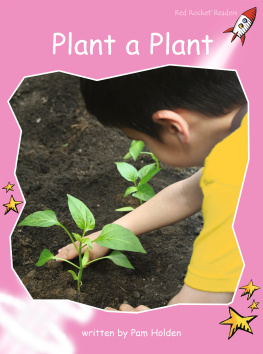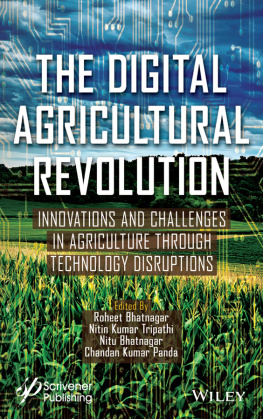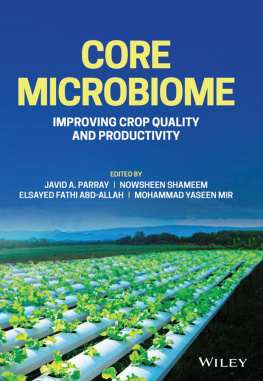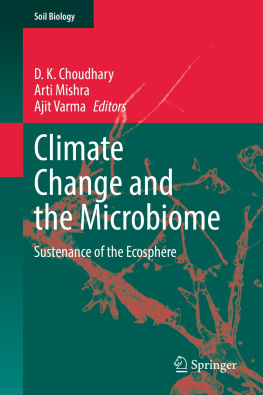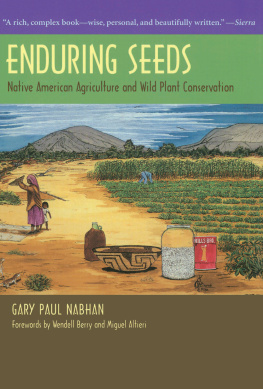DARWINIAN AGRICULTURE
Darwinian Agriculture
HOW UNDERSTANDING EVOLUTION
CAN IMPROVE AGRICULTURE
R. FORD DENISON

Copyright 2012 by Princeton University Press
Published by Princeton University Press, 41 William Street,
Princeton, New Jersey 08540
In the United Kingdom: Princeton University Press, 6 Oxford Street,
Woodstock, Oxfordshire OX20 1TW
press.princeton.edu
All Rights Reserved
Library of Congress Cataloging-in-Publication Data
Denison, R. Ford, 1953
Darwinian agriculture: how understanding evolution can improve agriculture /
R. Ford Denison.Hardcover ed.
p. cm.
Includes bibliographical references and index.
ISBN 978-0-691-13950-0 (hardcover: alk. paper)
1. CropsEvolution. 2. Evolution (Biology) 3. Agricultural biotechnology.
4. Sustainable agriculture. I. Title.
SB106.O74D46 2012
631dc23 2011042239
British Library Cataloging-in-Publication Data is available
This book has been composed in Sabon
Printed on acid-free paper.
Printed in the United States of America
10 9 8 7 6 5 4 3 2 1
Contents
Illustrations
DARWINIAN AGRICULTURE
1
Repaying Darwins Debt to Agriculture
THIS BOOK EXPLORES new approaches to improving agriculture, inspired by nature and informed by evolutionary biology. Biologists are nearly unanimous in accepting the multiple lines of evidence that life on earth has evolved and is evolving, so applying evolutionary biology to agriculture should be no more controversial than applying chemistry and microbiology to soil science. Yet some implications of past and ongoing evolution for agriculture have often been neglected.
Nature, Agriculture, and Evolutionary Tradeoffs
In particular, I will argue that two popular approaches to improving agriculture have tended to ignore evolutionary tradeoffsthat is, cases where an evolutionary change that is positive in one context is negative in another. Biotechnology advocates have often overlooked tradeoffs that arise when we genetically modify processes like photosynthesis, which have already been improved over millions of years of evolution. Therefore, the overall organization of natural communities may not be optimal, particularly as a model for agriculture. Once we drop the assumption of perfection, however, we can learn much from studying natural communities. Whether we focus on genetic improvement of crops or better management of agricultural ecosystems, identifying (and sometimes accepting) tradeoffs that constrained past evolution can often lead to new solutions to agricultural problems.
Both agricultural biotechnologists and people looking for agricultural inspiration in nature have valuable expertise and good ideas; they simply need to pay more attention to evolutionary tradeoffs. I hope this book will be read by members of both groups who want to increase their chances of success. Similarly, I hope that readers whose background is mainly in evolution or mainly in agriculture will find something here to interest them in the intersection of these fields.
I assume that readers will startand end!with different views on many issues, from organic farming to biotechnology (see glossary). Readers will also presumably vary in their overall familiarity with agriculture and with biology. Therefore, I include an introductory chapter on agricultures challenges and one on evolutionary biology, emphasizing aspects key to my arguments. Many terms are defined at their first appearance in the text; I have also included an extensive glossary following the text that you can use for reference. Those who want more information, or who wonder how I have simplified a particular issue, are encouraged to read the relevant source materials listed in the references section; these are noted throughout the text using superscript numbers.
Agricultural Challenges... and Two Incomplete Solutions
Store grain everywhere, advised Chairman Mao, to ensure food security in the event of war or natural disaster. Thousands of years earlier, Egypt reportedly found a seven-year supply to be adequate. Although different assumptions would lead to somewhat different numbers, some increase in grain production will almost certainly be needed.
But at what environmental cost? For hundreds of years, we have increased food production by using more land and water for agriculture. Agriculture has expanded to use more water and land than any other human activity, accounting for up to 80 percent of our water use and 35 percent of the worlds ice-free land surface. Much of the remaining land is too steep, dry, wet, or cold for farming, or is set aside for parks and nature preserves. Do we really want to divert more water from rivers for irrigation, perhaps endangering fish or other wildlife? Do we really want to clear more forests or drain more wetlands to expand farmland?
I dont think so. Instead, we need to use the resources already allocated to agriculture more efficiently. For example, we need to increase the ratio of food produced to water used. This is one definition of water-use efficiency (WUE). The ratio of food produced to land area used could be called land-use efficiency, but I will use the traditional term, yield. Farms account for only 3 to 5 percent of energy use in industrialized countries,but rising fuel prices will make energy-use efficiency increasingly important to farmers.
Resource-use efficiency and food security (including quality, affordability, year-to-year reliability, and long-term sustainability) are not the only challenges facing agriculture, but they are the main focus of this book. Our goals for agriculture are considered in more detail in the next chapter.
When there are tradeoffs among multiple goals, which should have priority? Because agriculture uses a larger fraction of our water and land than it uses of fossil fuels, maybe water-use efficiency and yield should be higher priorities than energy-use efficiency. On the other hand, water and land can be reused, if we dont degrade them. Fossil fuels, once burned, are gone forever. The information in this book should help you draw your own conclusions, which may differ from mine. But even if we disagree on some answers, perhaps can we at least agree on this central question:
How can agriculture reliably meet our needs for high-quality food and other farm products (like cotton or wool) over the long term, without environmental damage?
Two approaches that have often been proposedrarely by the same people!are biotechnology (such as adding genes from unrelated species to our crops, making them transgenic; see glossary) The theme of this book is that although each of these approaches has potential, both of them would benefit from greater attention to evolution, both past and ongoing.
Well-intentioned biotechnology experts may underestimate some risks of their approach. These include accidental consumption of crops grown to produce pharmaceuticals. Some less-direct risks discussed in later chapters may be even more important. Modern industrial agriculture is largely based on monoculture, that is, growing only one crop at a time in each field. Regionally and globally, we practice oligoculture, relying mainly on only a few crops, particularly corn (maize), wheat, and rice. Our major crops have been represented by many different varieties, reducing the risk that disease will destroy the crop over large enough areas to cause food shortages. Because developing each transgenic crop is so expensive, however, there are typically far fewer transgenic varieties than there are varieties developed by traditional plant breeding. If most farmers choose from only a few transgenic options, reducing overall crop diversity, are we putting too many eggs in too few baskets?
Next page

